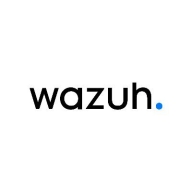

Wazuh and Cisco XDR are competitors in the cybersecurity market, with Cisco XDR offering more advanced features that might justify its higher cost, making it potentially superior for comprehensive security needs.
Features: Wazuh offers open-source data collection, threat detection, and log management, prioritizing scalability and user accessibility. Cisco XDR provides integrated threat intelligence, sophisticated analytics, and automation capabilities, addressing varied enterprise needs with its comprehensive detection and response features.
Room for Improvement: Wazuh could enhance user interface elements and expand integration capabilities with third-party services. Improving documentation for advanced configurations and boosting real-time threat tracking would also be beneficial. Cisco XDR could reduce complexity in deployment and offer more flexible pricing structures. Enhancing user training programs and streamlining integrations with non-Cisco services may also improve its appeal.
Ease of Deployment and Customer Service: Wazuh's open-source nature ensures easier deployment and significant community support, suitable for minimal investment. Cisco XDR provides structured deployment models and robust commercial support, essential for complex environments despite higher complexity.
Pricing and ROI: Wazuh's open-source model cuts setup costs, offering promising ROI for budget-focused security solutions. Cisco XDR involves a higher upfront cost due to licensing fees but promises potentially greater long-term ROI with its advanced capabilities and solid support framework, attractive to organizations focused on comprehensive threat management.
| Product | Market Share (%) |
|---|---|
| Wazuh | 9.6% |
| Cisco XDR | 2.0% |
| Other | 88.4% |


| Company Size | Count |
|---|---|
| Small Business | 26 |
| Midsize Enterprise | 15 |
| Large Enterprise | 8 |
Cisco XDR delivers an advanced threat detection and response experience through integration with Cisco's security suite, offering enhanced visibility, intelligence, and automation for network protection and system evaluations.
Cisco XDR integrates with Cisco Meraki and Splunk, excelling in threat intelligence and zero-day attack detection. Its automated response features provide crucial support in managing extensive networks, while the comprehensive log management facilitates detailed troubleshooting. Dashboards assist in system evaluation for effective gap mitigation. Despite its licensing complexity and upfront costs, it remains a key tool for Security Operations Center analysts and internet service providers, helping isolate threats and ensuring consistent security monitoring.
What features make Cisco XDR stand out?Cisco XDR is widely implemented in sectors requiring robust network management and monitoring. Organizations use it alongside Cisco Firepower Threat Defense and Meraki for comprehensive security measures, benefiting global customers and internet service providers for traffic and routing insights across devices and data centers.
Wazuh offers comprehensive security features like MITRE ATT&CK correlation, log monitoring, and cloud-native infrastructure. It ensures compliance and provides intrusion detection with high scalability and open-source flexibility, ideal for businesses seeking robust SIEM capabilities.
Wazuh stands out in security information and event management by providing efficient log aggregation, vulnerability scanning, and event correlation against MITRE ATT&CK. Its capability to integrate seamlessly with environments, manage compliance, and monitor files makes it suitable for cloud-native infrastructures and financial sectors. Despite its technical support needing enhancement and opportunities for improving AI integration and threat intelligence, its open-source nature and cost-effectiveness make it appealing. Users can leverage custom dashboards powered by Elasticsearch for precise data analysis, even though there is a desire for a more user-friendly interface and better enterprise solution integration. Deployment may be complex, but its features contribute significantly to fortified security postures.
What are the essential features of Wazuh?Industries like finance and cloud infrastructure heavily utilize Wazuh for its security strengths. By monitoring endpoints and ensuring compliance with frameworks, companies can improve security posture and swiftly detect anomalies. The platform's focus on event correlation and alerts for security incidents is particularly beneficial.
We monitor all Extended Detection and Response (XDR) reviews to prevent fraudulent reviews and keep review quality high. We do not post reviews by company employees or direct competitors. We validate each review for authenticity via cross-reference with LinkedIn, and personal follow-up with the reviewer when necessary.